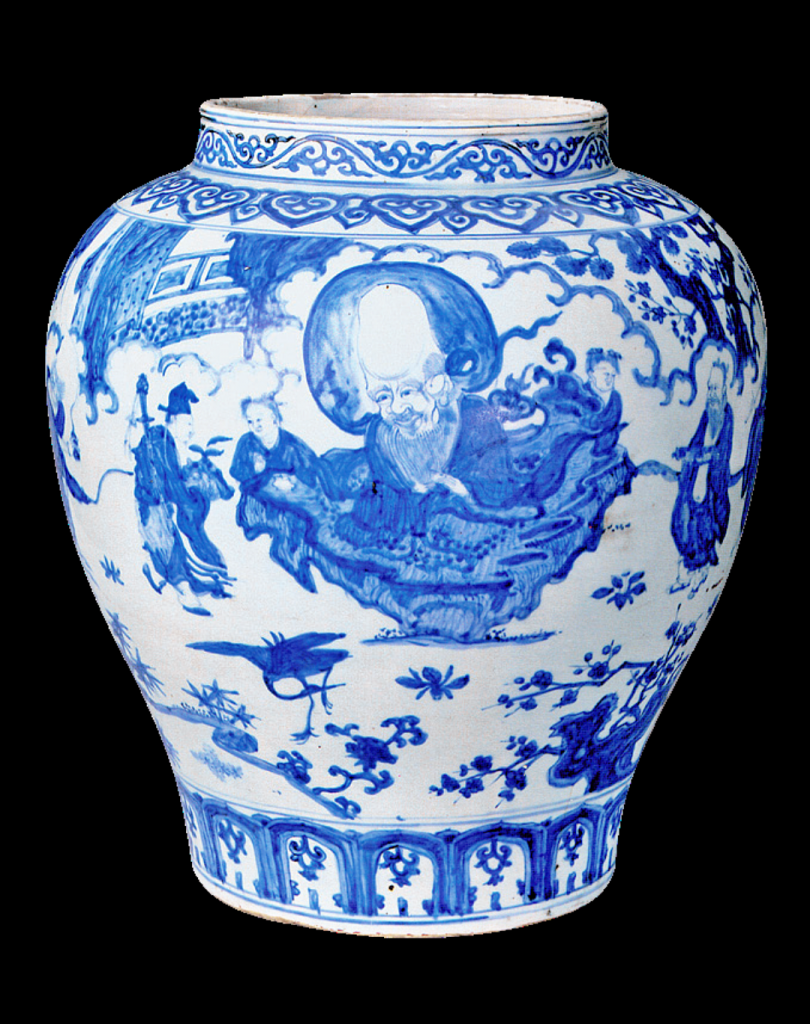The Artistic Peak of the Ming Dynasty (1368-1644)
The Ming Dynasty represents one of the most prosperous periods of Chinese art, marked by a revival of Han cultural traditions after the Mongol rule of the Yuan. Over nearly three centuries, this empire produced masterpieces that continue to influence contemporary Asian art. This article explores the evolution of visual arts under the Ming, from revolutionary pictorial movements to innovations in decorative arts.
Historical Context and Cultural Renaissance
The advent of the Ming in 1368 under 朱元璋 (the Hongwu Emperor) marked a return to Han power after nearly a century of foreign domination. This political change was accompanied by a cultural revitalization movement:
- Restoration of the Imperial Academy of Painting
- Unprecedented imperial patronage in the arts
- Economic boom stimulating artistic production
- Systematic rediscovery of Tang and Song classics

1368: Artistic Renaissance under the Ming
The new dynasty worked to restore traditional Chinese values in all creative fields. The Academy of Painting, a major institution under the Song but abolished during the Mongol occupation, regained its official status. However, the Ming state exercised stricter control over artistic creation, limiting the independence that characterized the academy at its peak.
Southern China, particularly the regions of 江苏 (Jiangsu) and 浙江 (Zhejiang) around cultural centers like 苏州 (Suzhou) and 杭州 (Hangzhou), became the crucible of the artistic renaissance thanks to unprecedented economic prosperity.
The Three Great Pictorial Movements
The Zhe School: Innovative Synthesis
The first major movement of the Ming period, the Zhe School emerged in Zhejiang with a revolutionary approach fusing academic rigor and personal expression. Its masters developed a style characterized by:
- Dynamic and theatrical compositions
- Virtuoso use of ink and washes
- Themes including landscapes, court scenes, and characters
Two figures dominate this movement: 戴进 (1388-1462), renowned for his monumental landscapes, and 吴伟 (1459-1508), master of expressive portraits and narrative scenes.
The Wu School: Scholarly Renaissance
Born in Suzhou towards the end of the 15th century, the Wu School advocated a return to the literary painting of the Yuan. Its adherents rejected the professionalism of the court in favor of:
- The ideal of 文人画 (literati painting)
- Poetic and spontaneous expression
- The union of calligraphy, painting, and poetry
沈周 (1427-1509) and 文徵明 (1470-1559) embody this movement with their introspective landscapes where each brushstroke conveys a philosophical emotion.
The Individualists: Technical Virtuosity
A third path emerged with independent artists who reinterpreted the academic style of the Southern Song. Their approach was distinguished by:
- Exceptional technical mastery
- An almost obsessive attention to detail
- The use of bright colors and gold leaf
The major trio - 仇英 (c.1494-1552), 唐寅 (1470-1524), and 董其昌 (1555-1636) - revolutionized narrative painting and court portraiture with refined elegance.
Revolution in Decorative Arts
Ming Ceramics: The Golden Age of Blue and White
Porcelain production reached technical and aesthetic heights with:
- The perfection of 青花 (blue and white)
- The invention of 斗彩 (contrasting colors) enamels
- The famous 永乐 and 宣德 vases
Lacquer and Furniture: Imperial Luxury
Imperial workshops developed sophisticated techniques:
- Carved lacquers 雕漆
- Mother-of-pearl and precious stone inlays
- Streamlined design highlighting noble materials
Textiles and Embroideries
Weaving and embroidery reached unparalleled perfection:
- Imperial silks 云锦
- Complex symbolic patterns (dragons, phoenixes)
- Innovations in dyeing techniques
Cultural Legacy and Global Influence
The Ming Dynasty bequeathed lasting artistic concepts to posterity:
- The theorization of literati painting by 董其昌
- The massive export of porcelain influencing European arts
- The codification of aesthetic canons in the 园冶 (Treatise on Gardens)

Typical Ming vase: cobalt blue on white porcelain (Jiajing period, 1522-1566)
Major Artists of the Ming Dynasty
| Artist | Period | Specialty | Major Contribution |
|---|---|---|---|
| 戴进 | 1388-1462 | Landscape Painting | Founder of the Zhe School |
| 沈周 | 1427-1509 | Literati Painting | Master of the Wu School |
| 唐寅 | 1470-1524 | Narrative Painting | Palace scenes and portraits |
| 文徵明 | 1470-1559 | Calligraphy and Painting | Synthesis of Song and Yuan styles |
| 董其昌 | 1555-1636 | Artistic Theory | North/South Division in Painting |
Advice for Collectors
Authentic Ming works have recognizable characteristics: precise brushstrokes under the blue painting, thick glaze with characteristic "tears," and reign marks 年号 carefully calligraphed on the back of ceramics.
The Lasting Legacy of the Ming
The art of the Ming Dynasty continues to inspire contemporary creators with its balance between tradition and innovation. International museums jealously guard these treasures, which testify to a golden age when China, strengthened by its cultural renaissance, shone on the world through its artistic sophistication and technical excellence.
